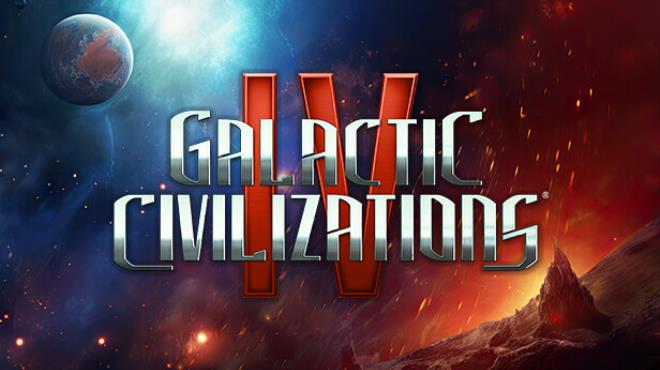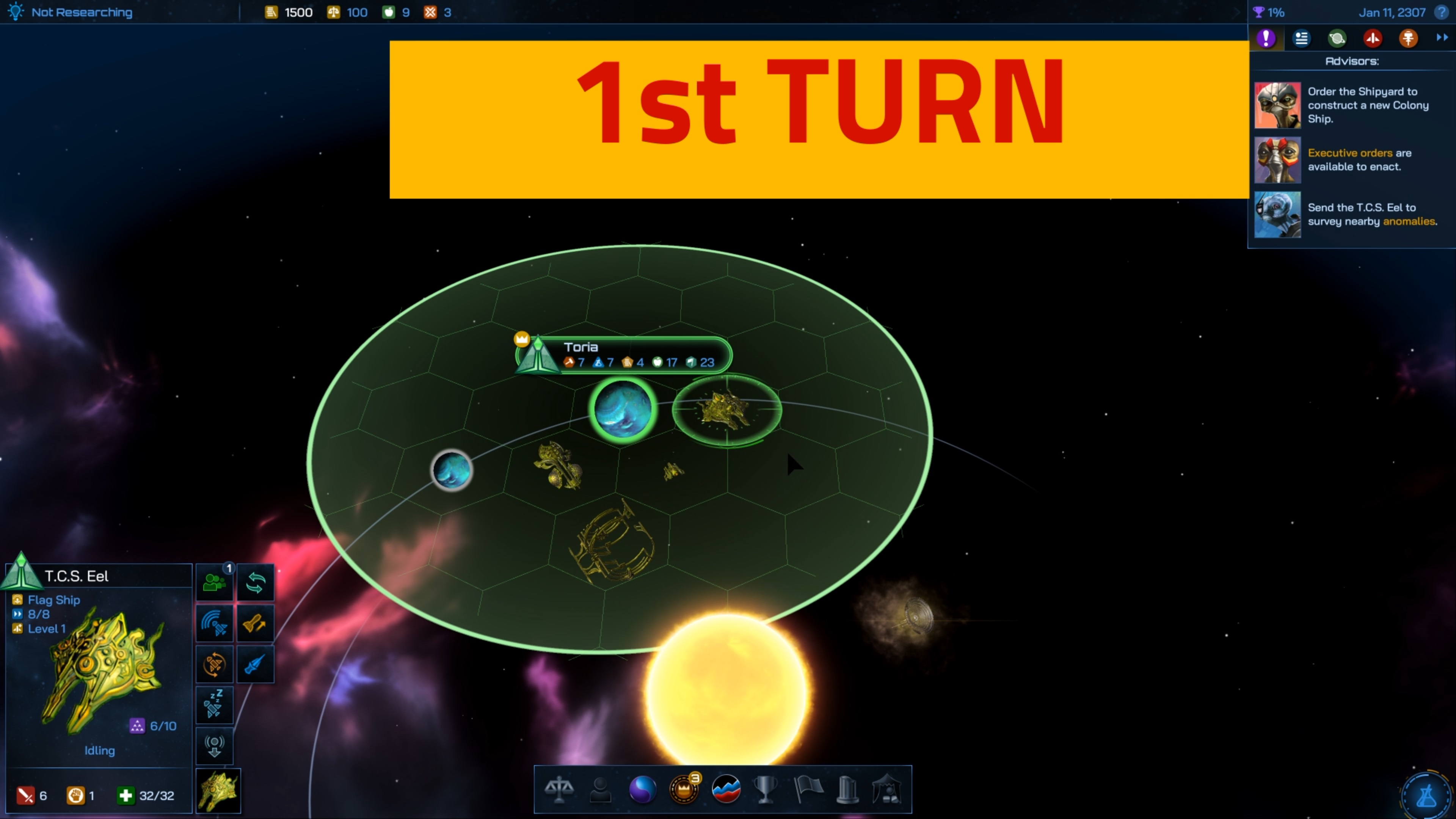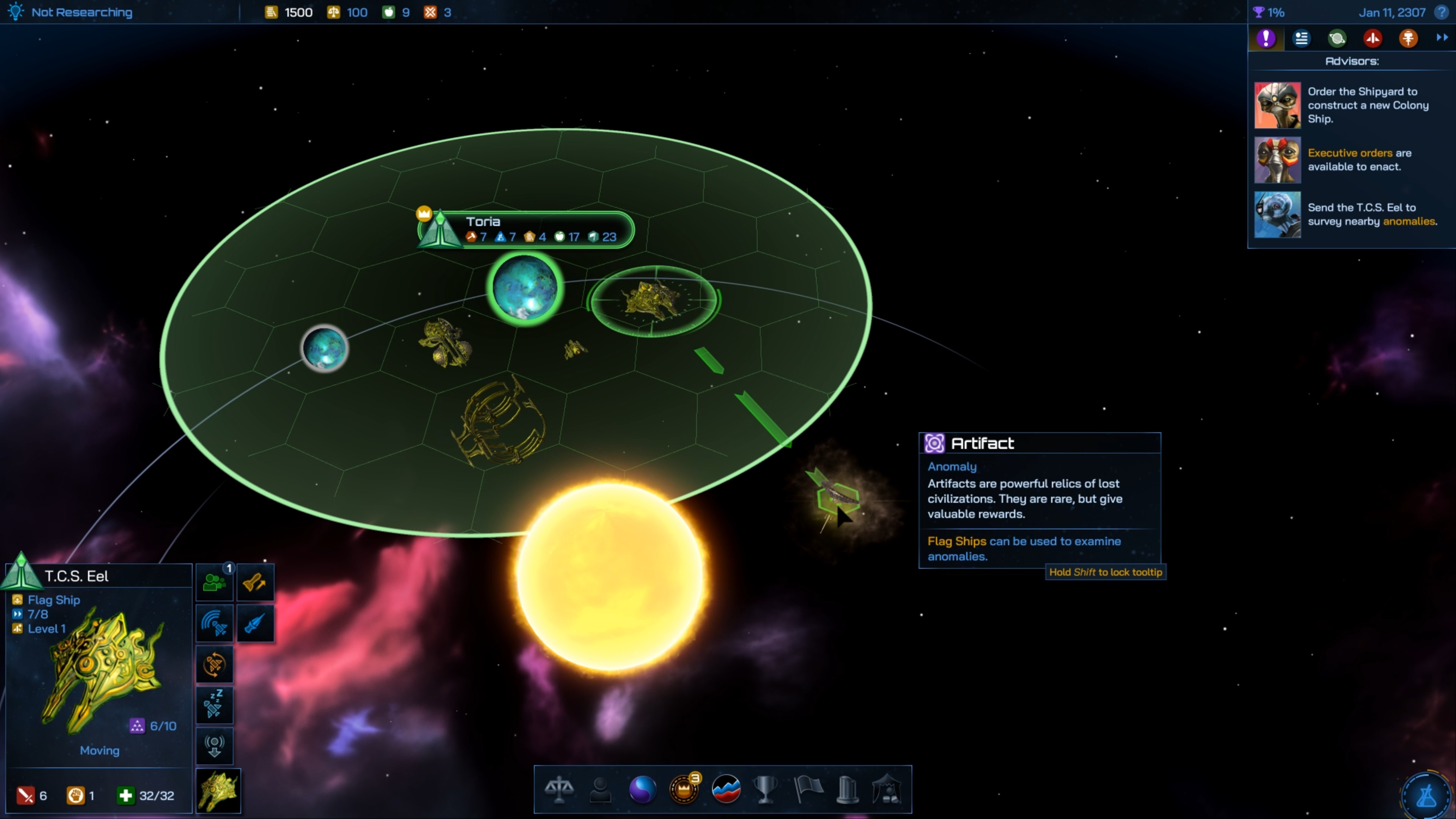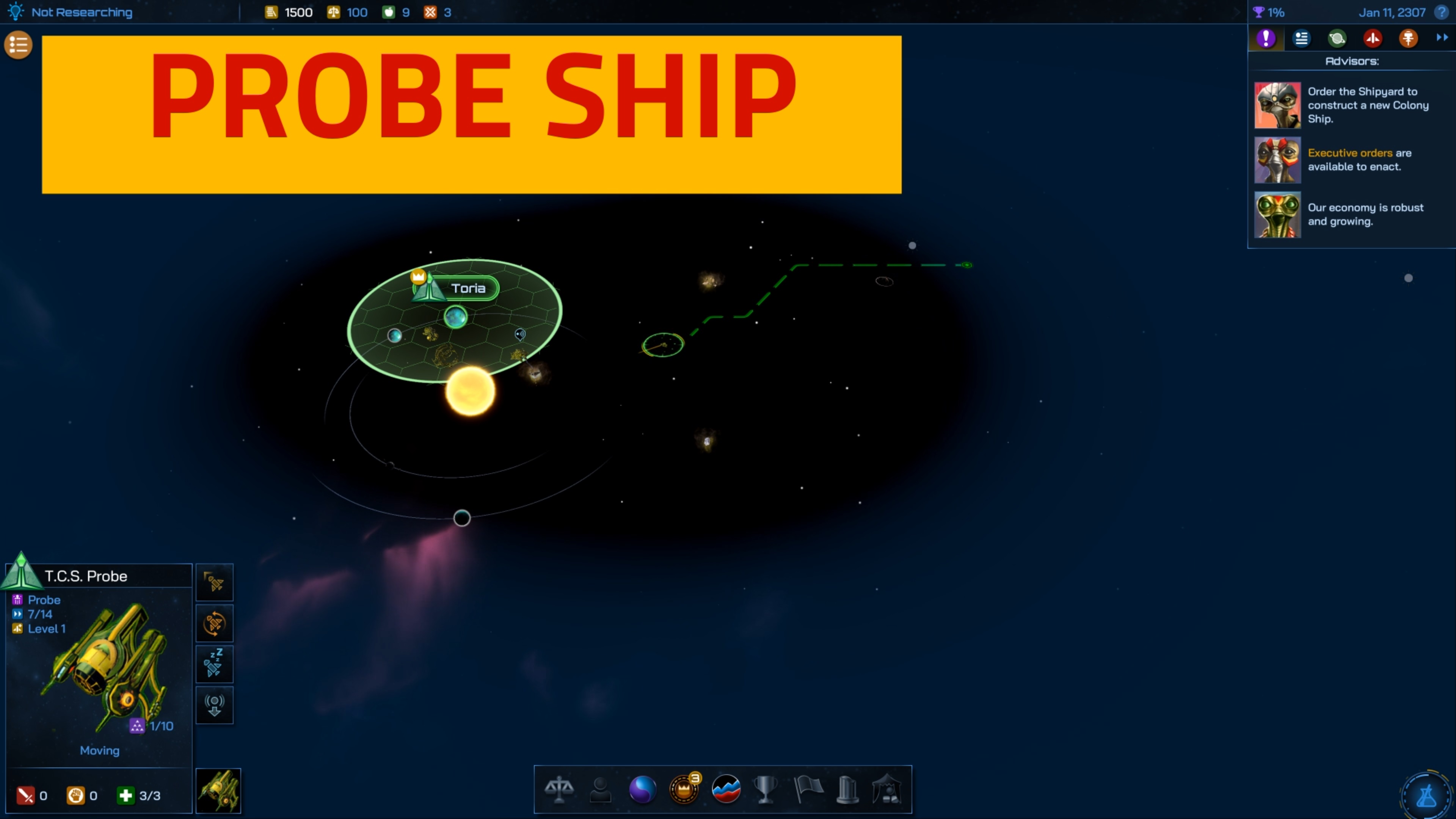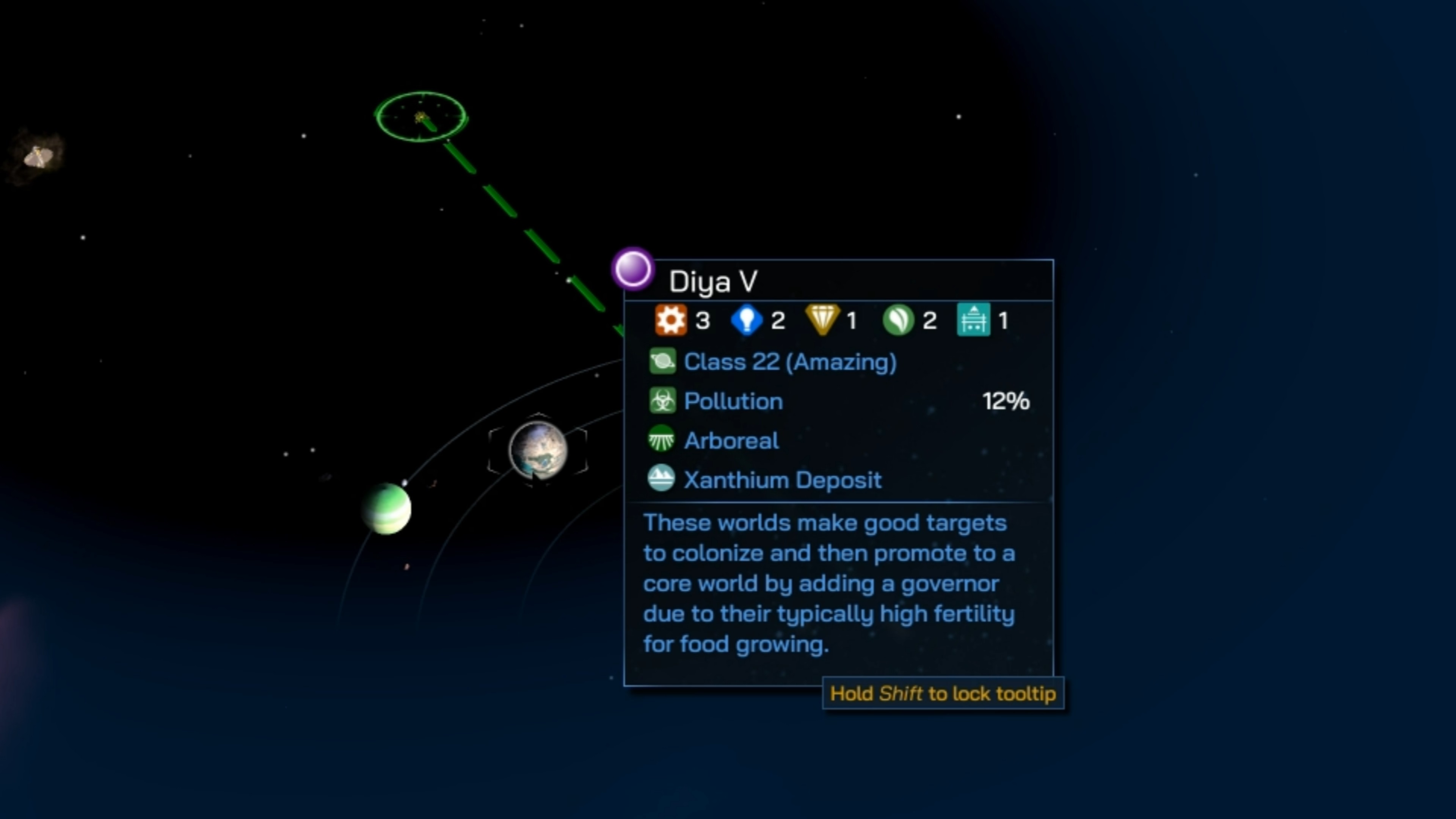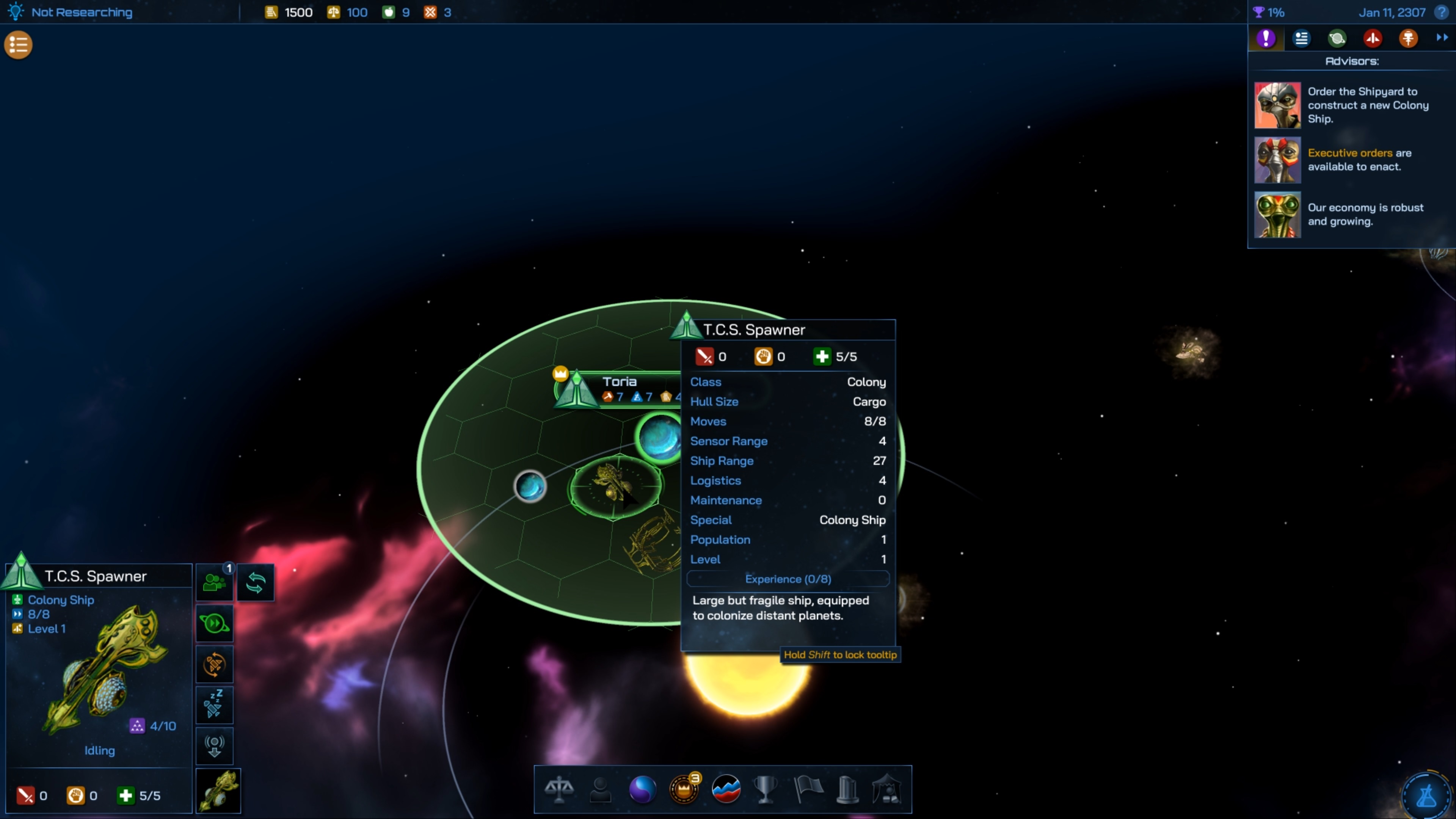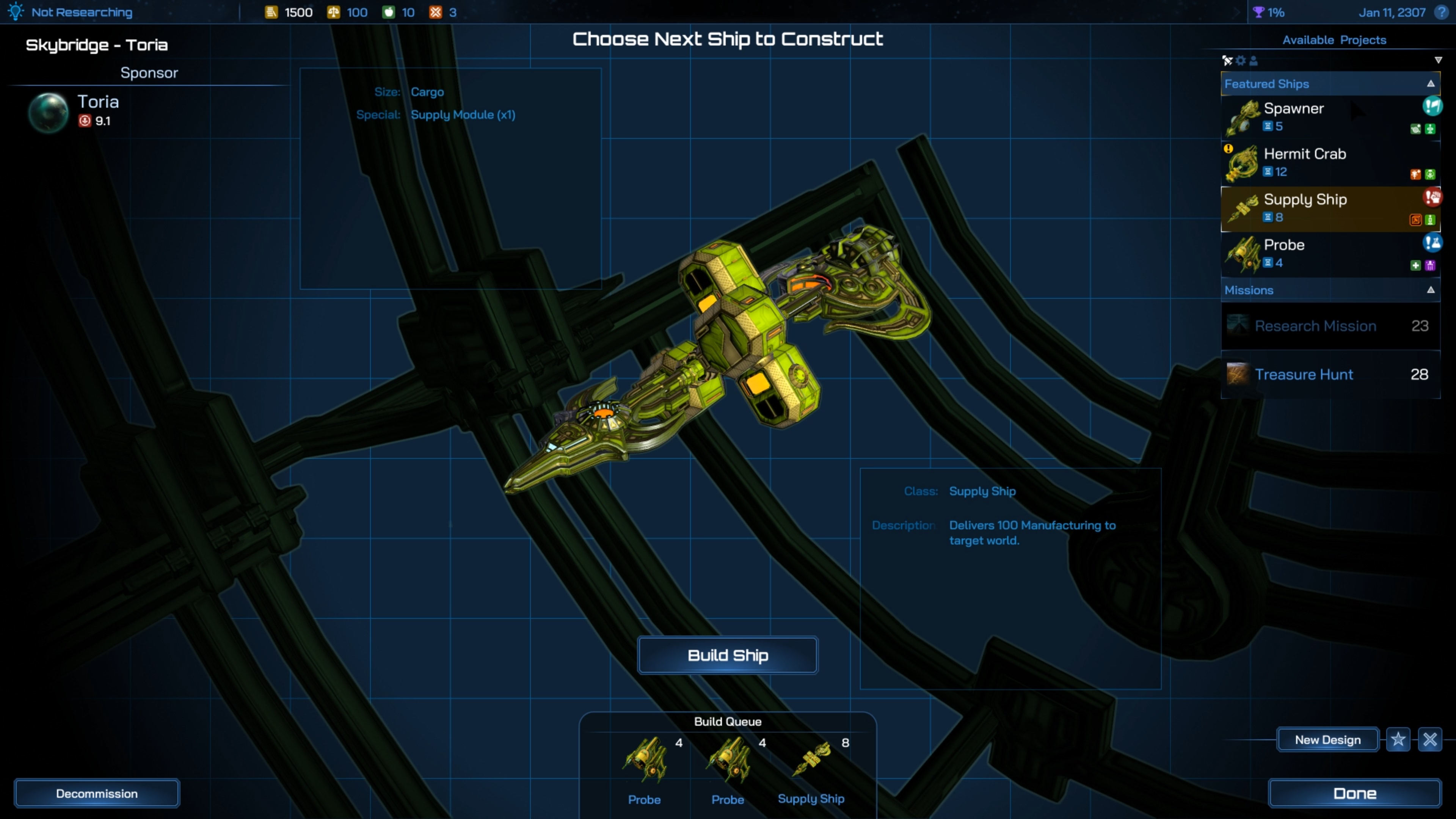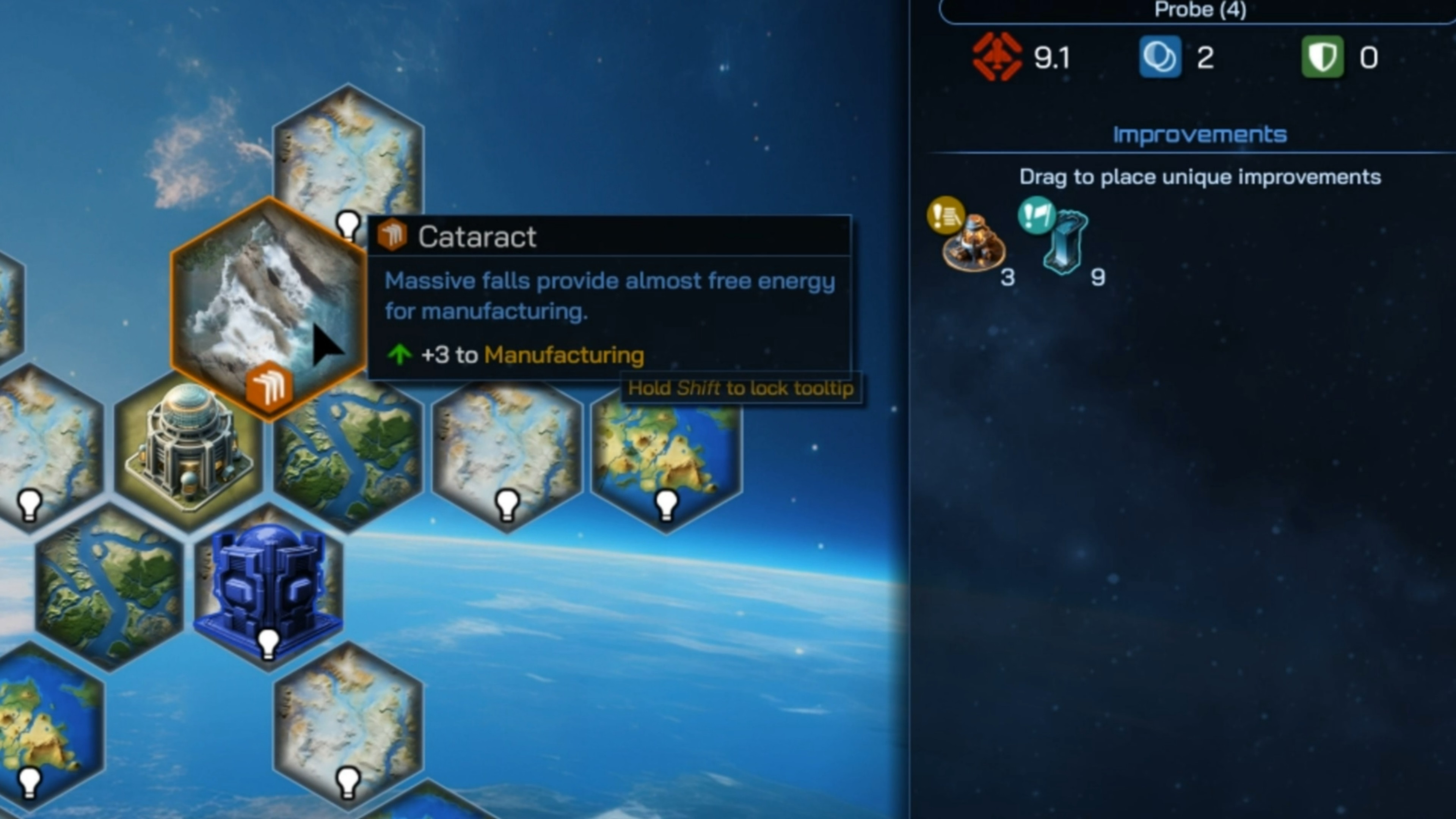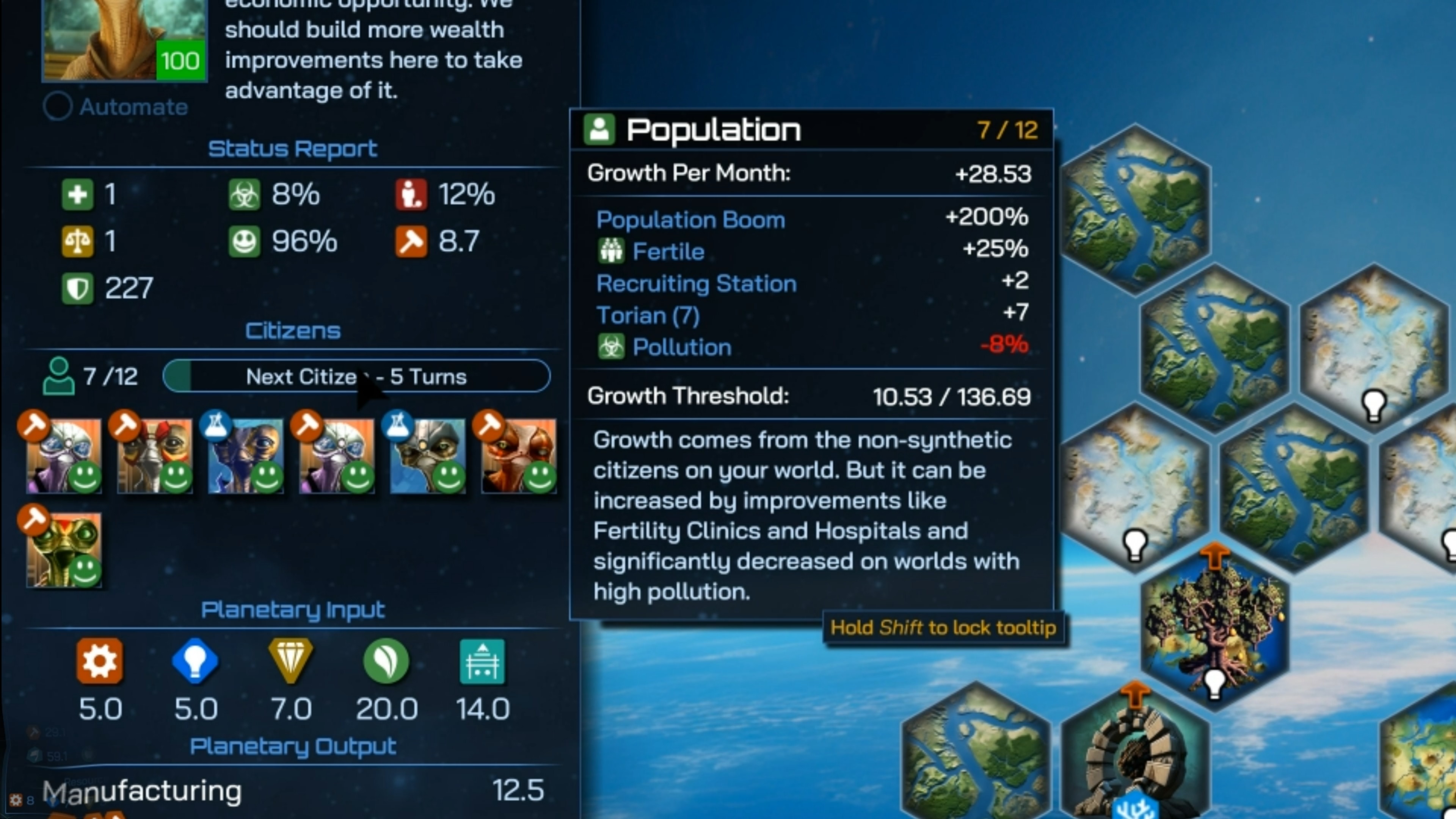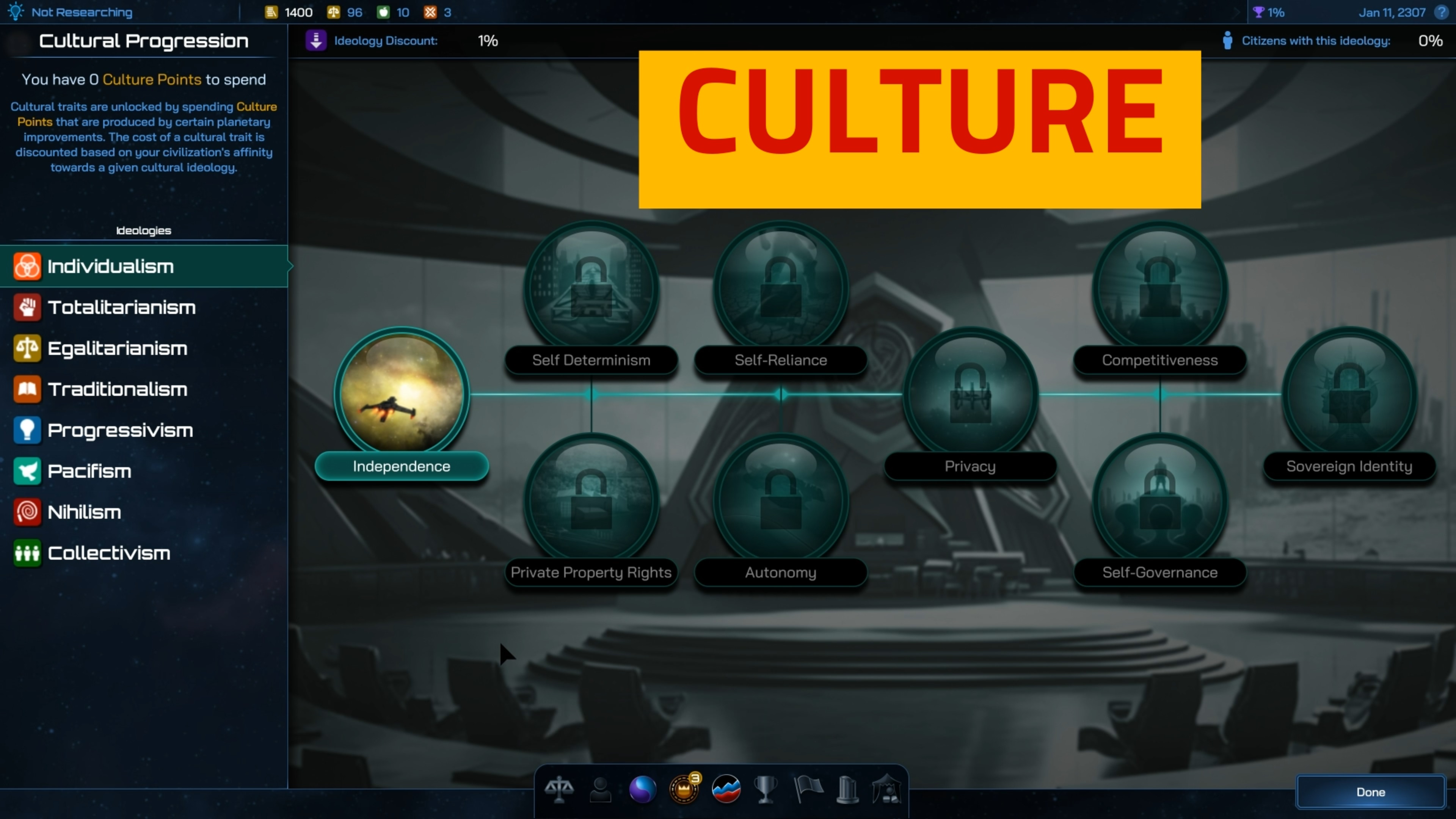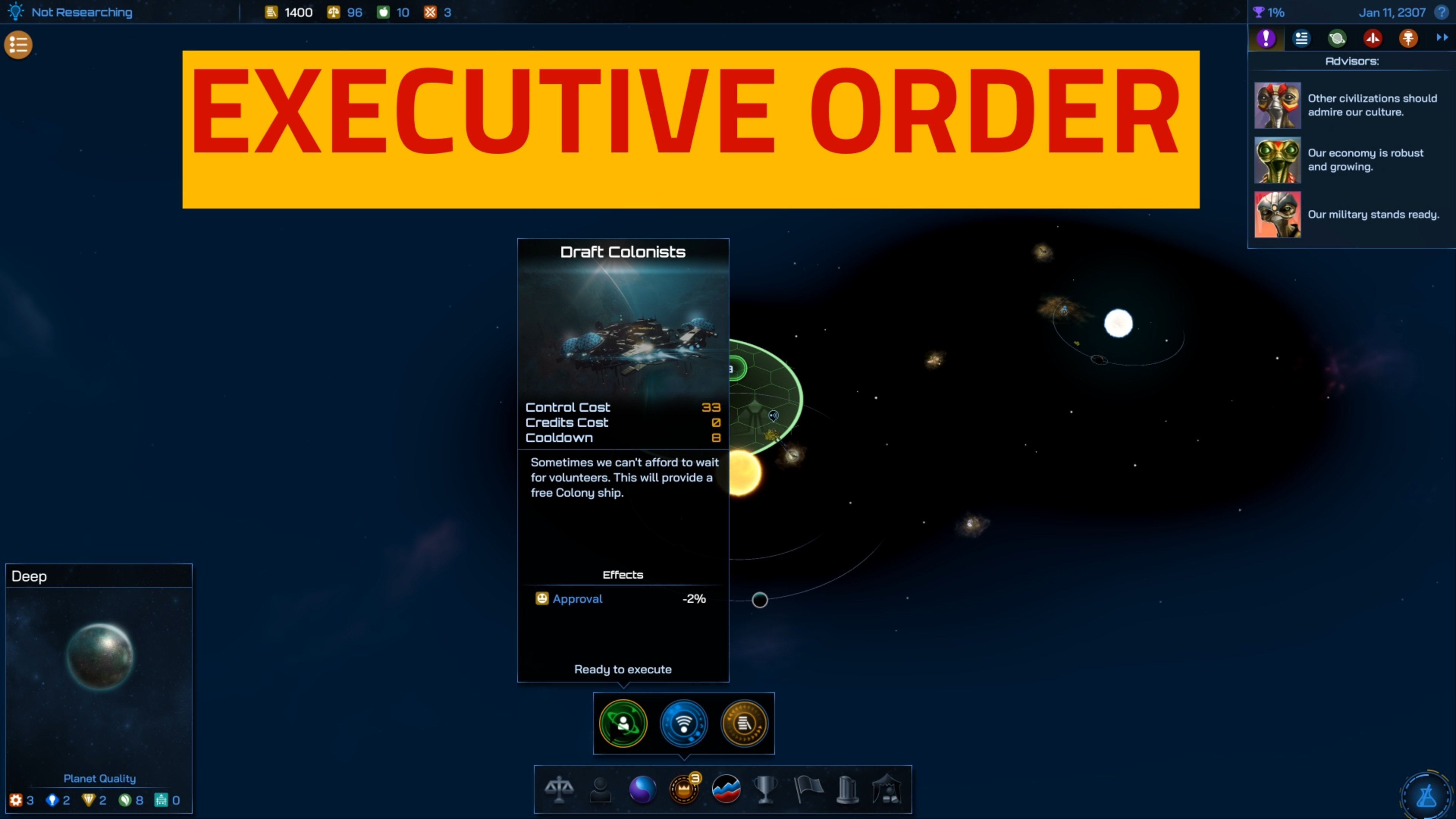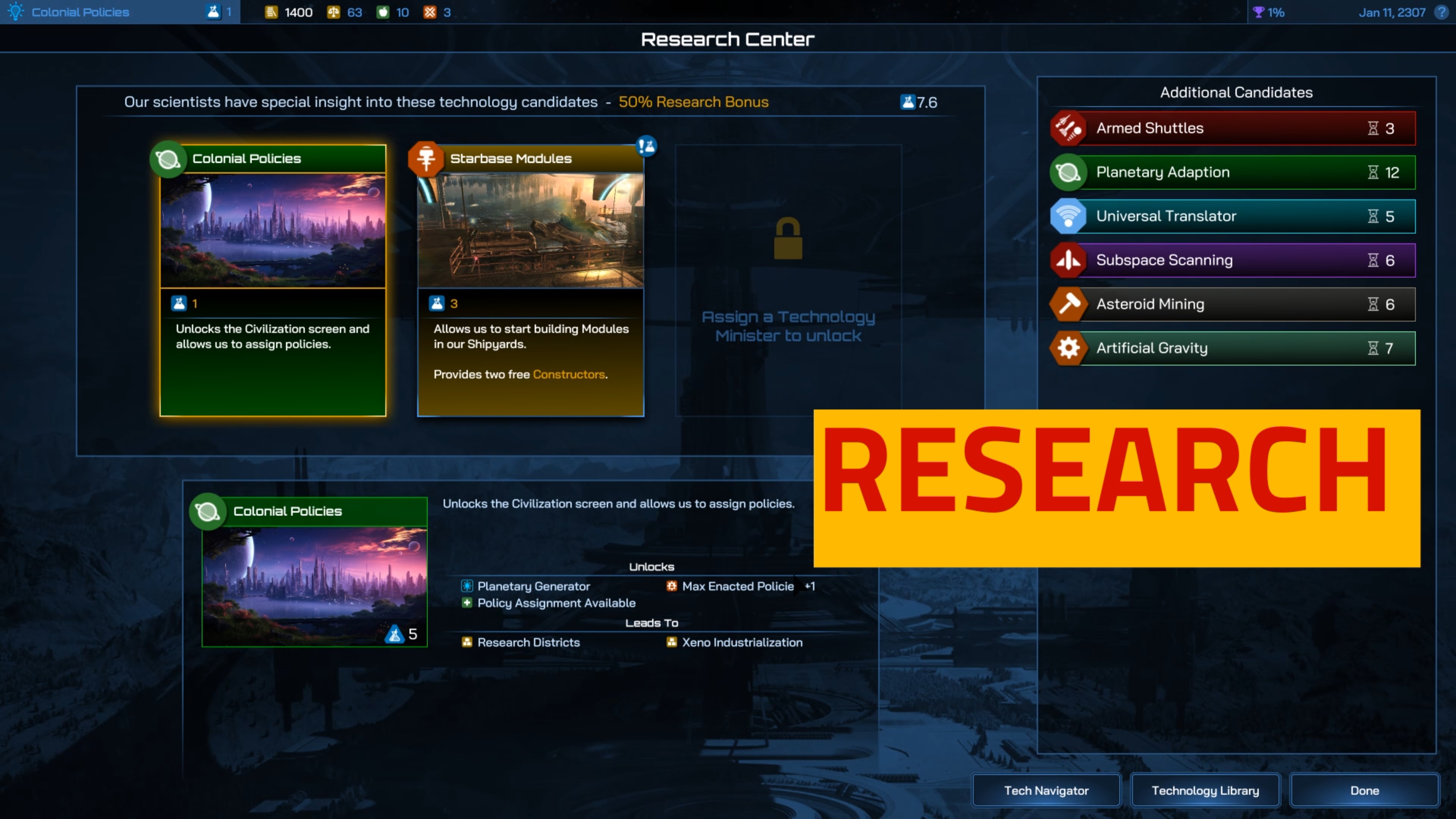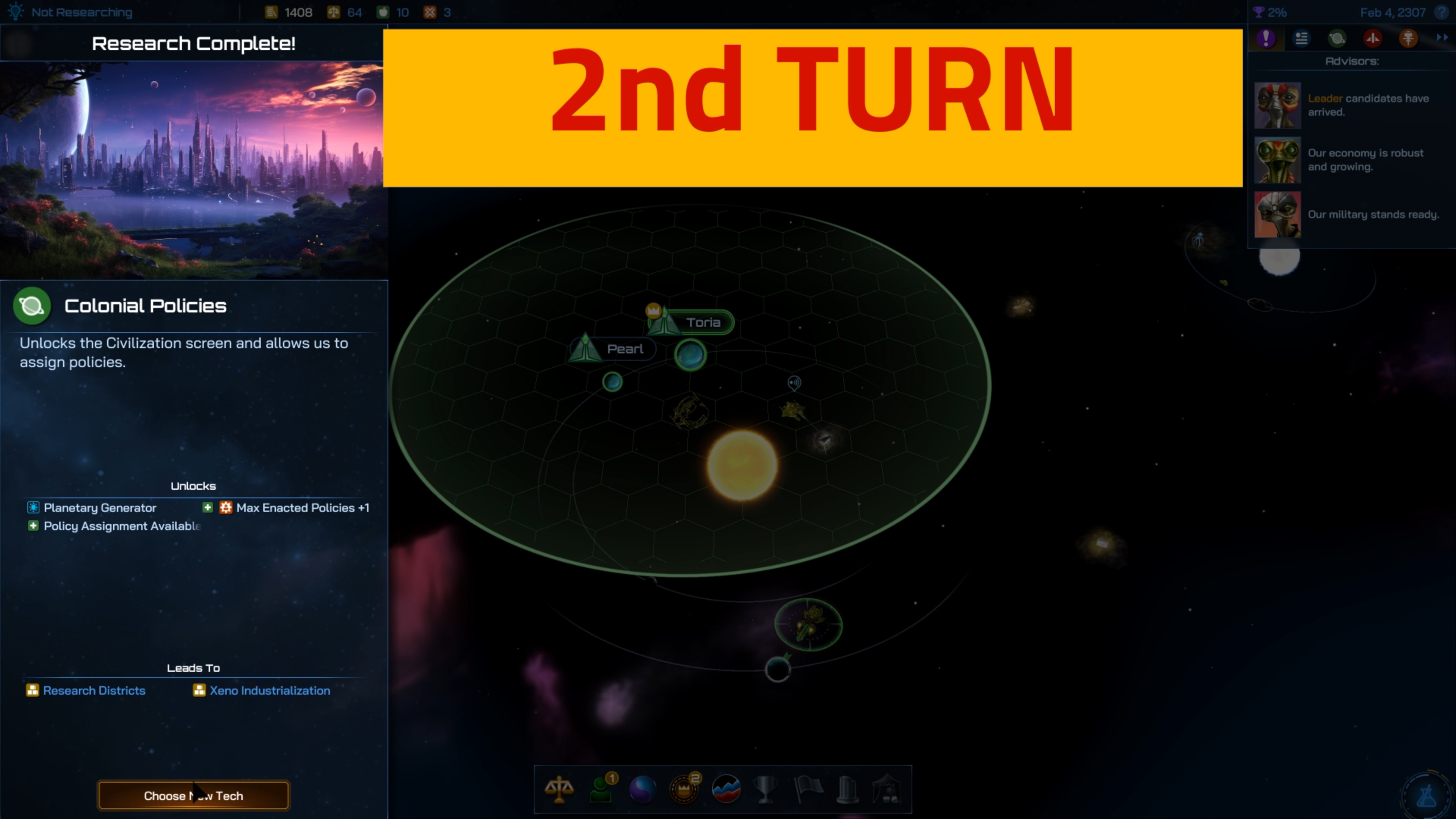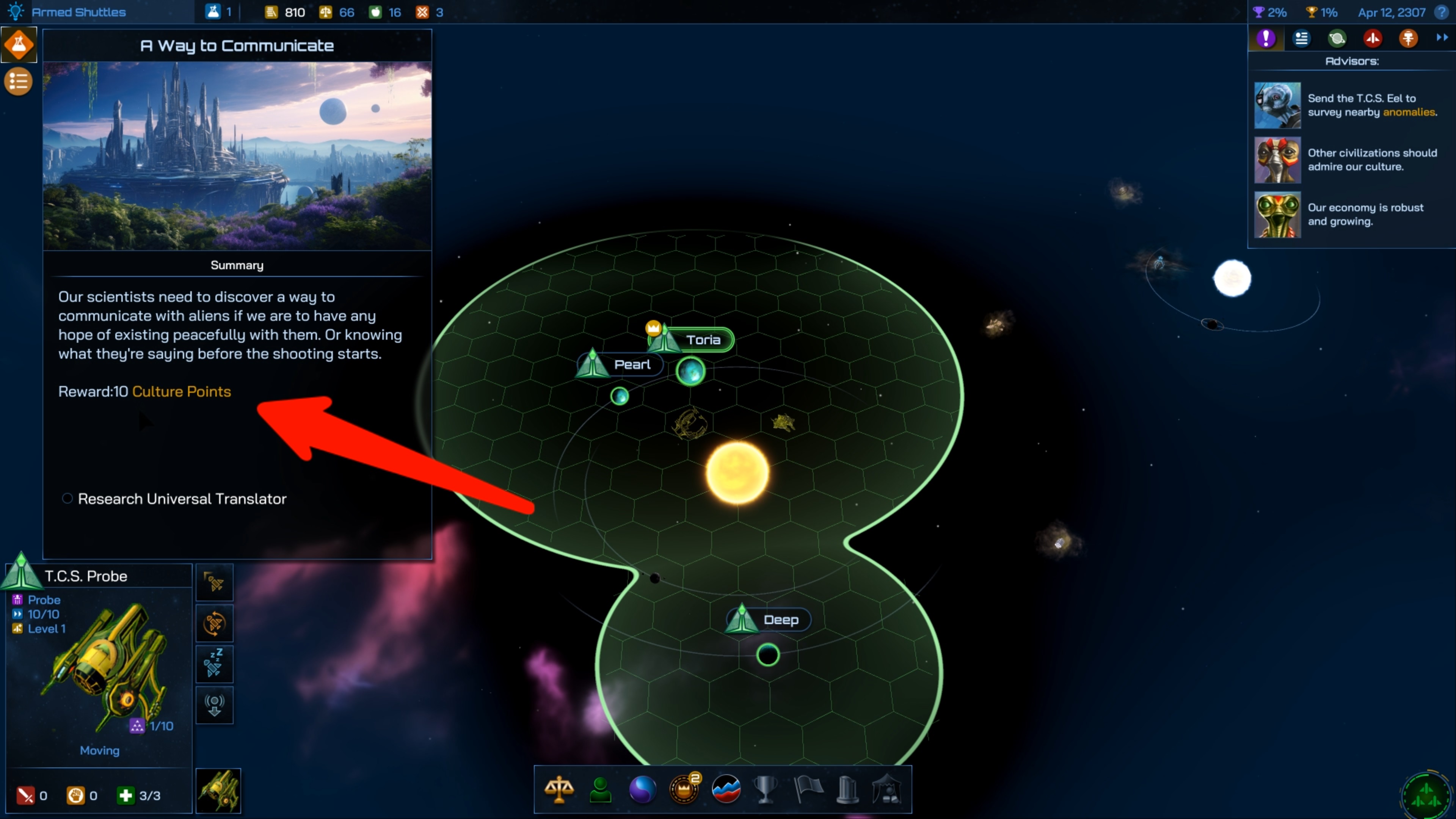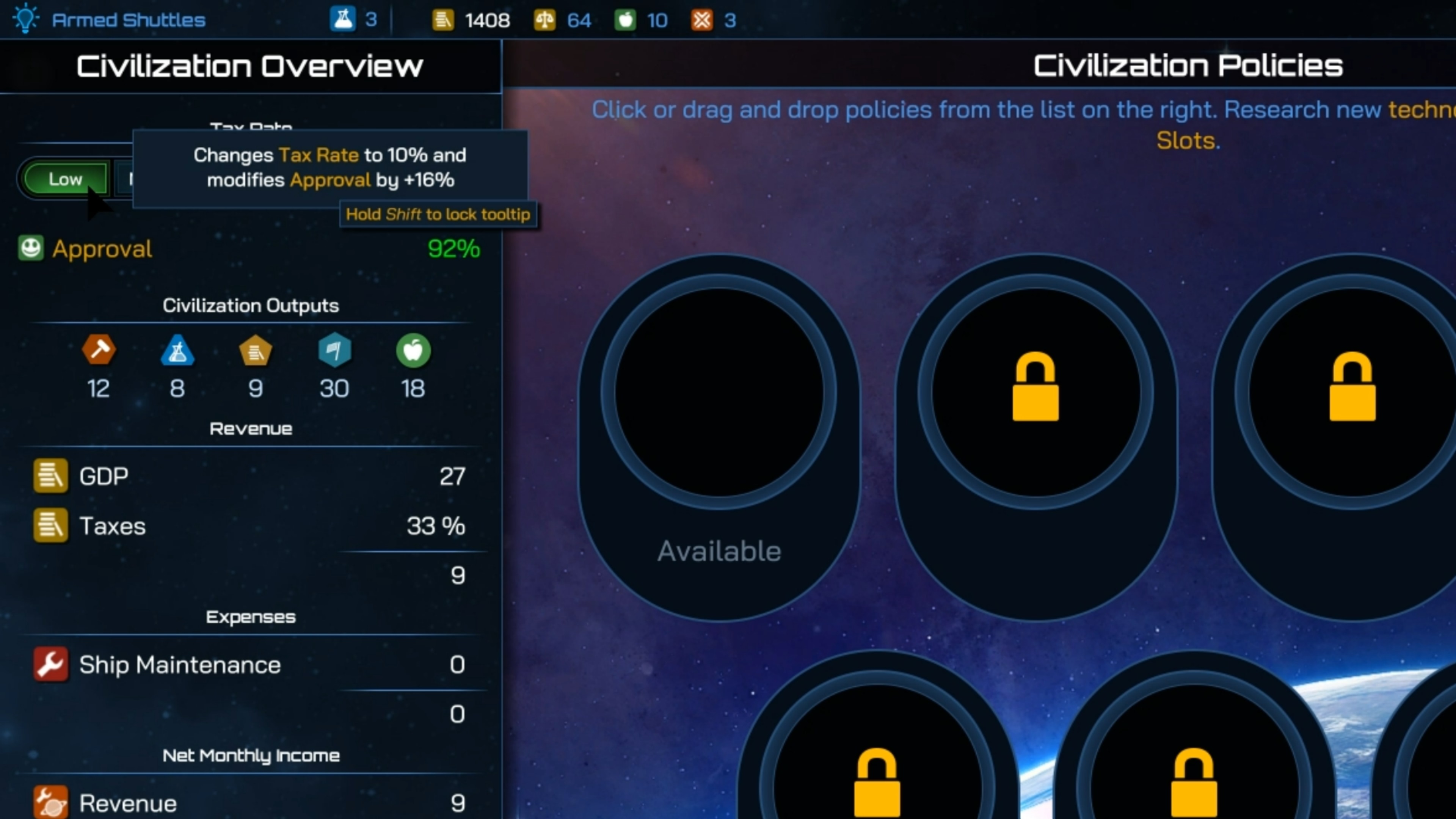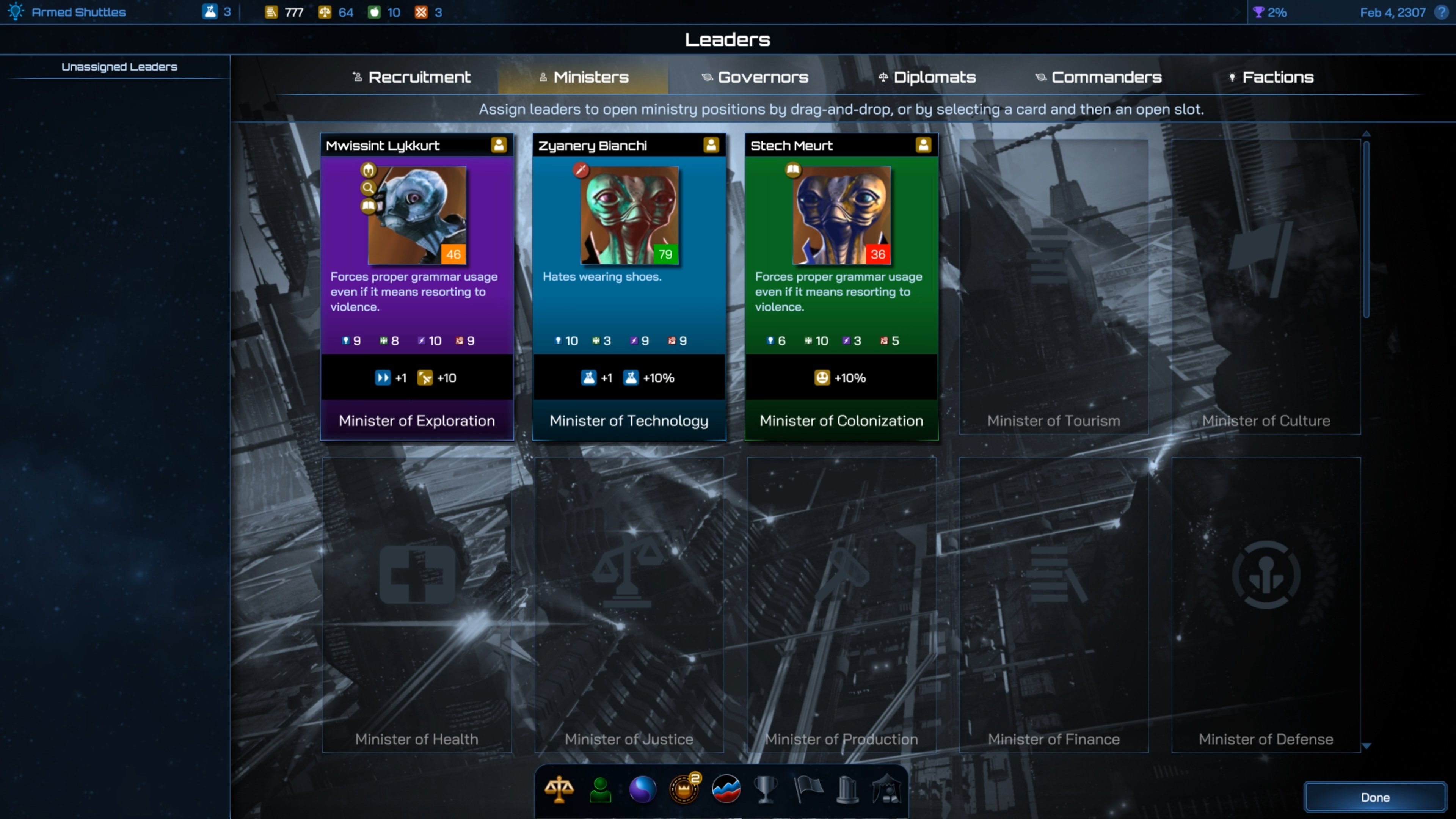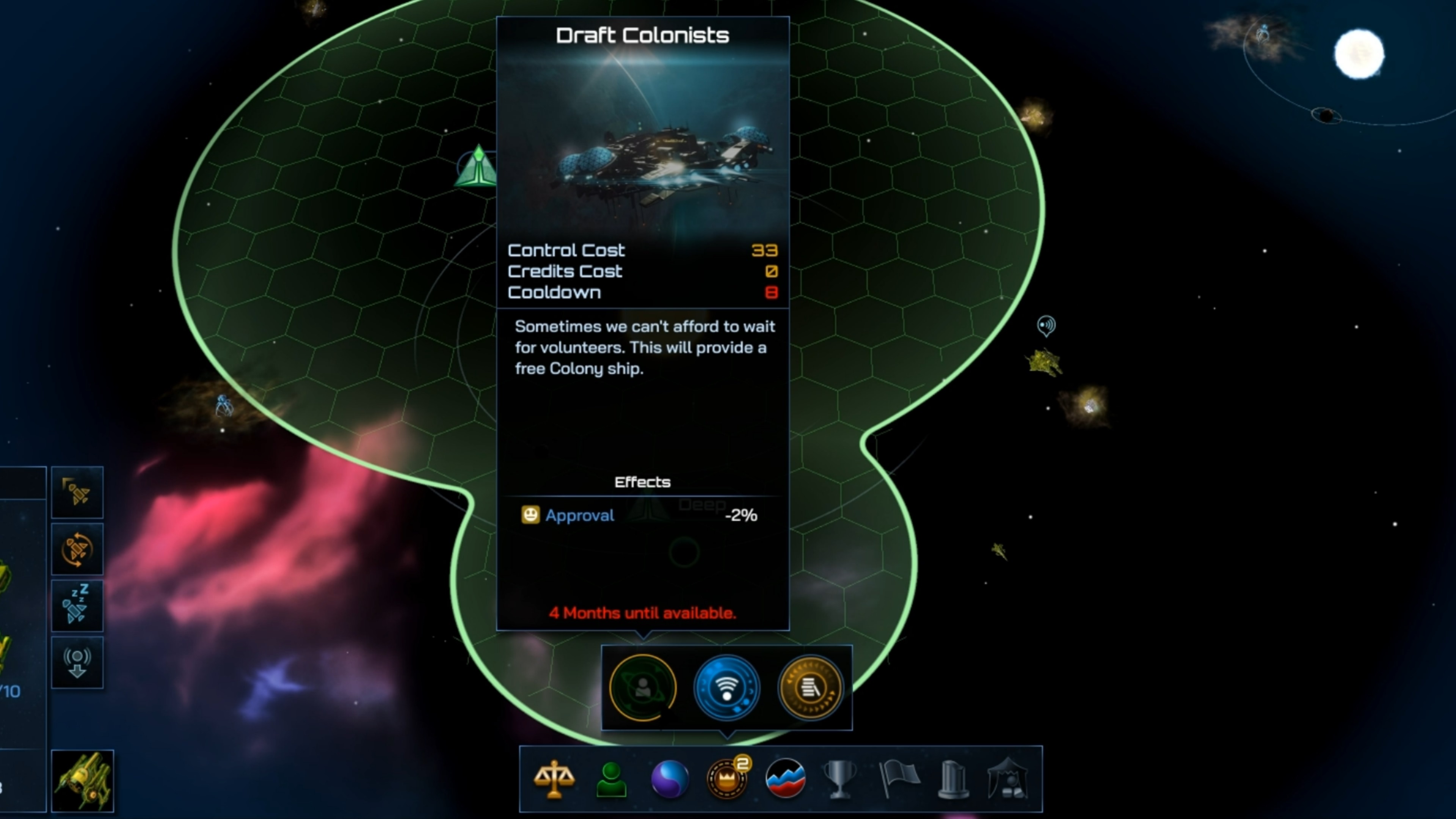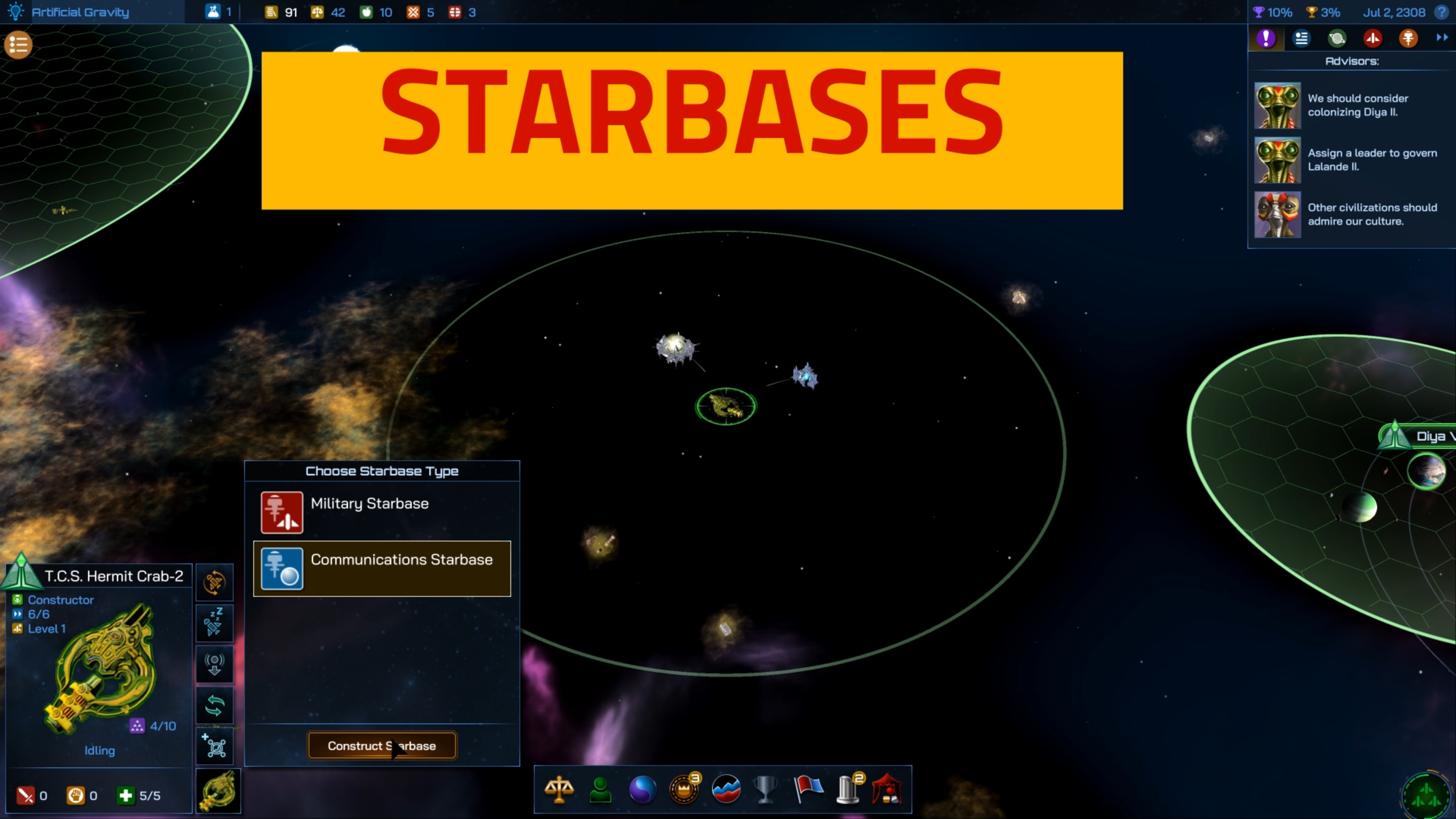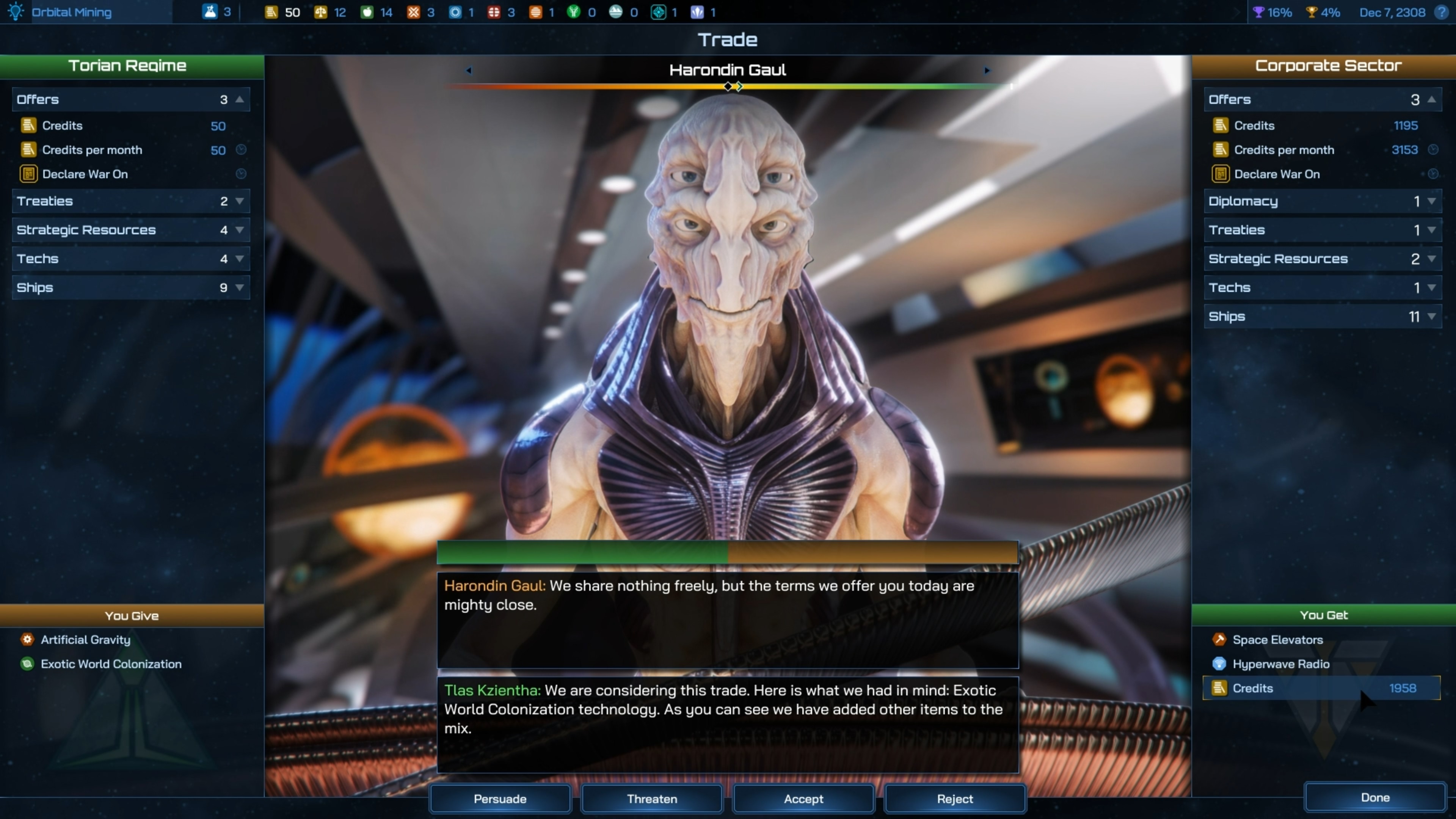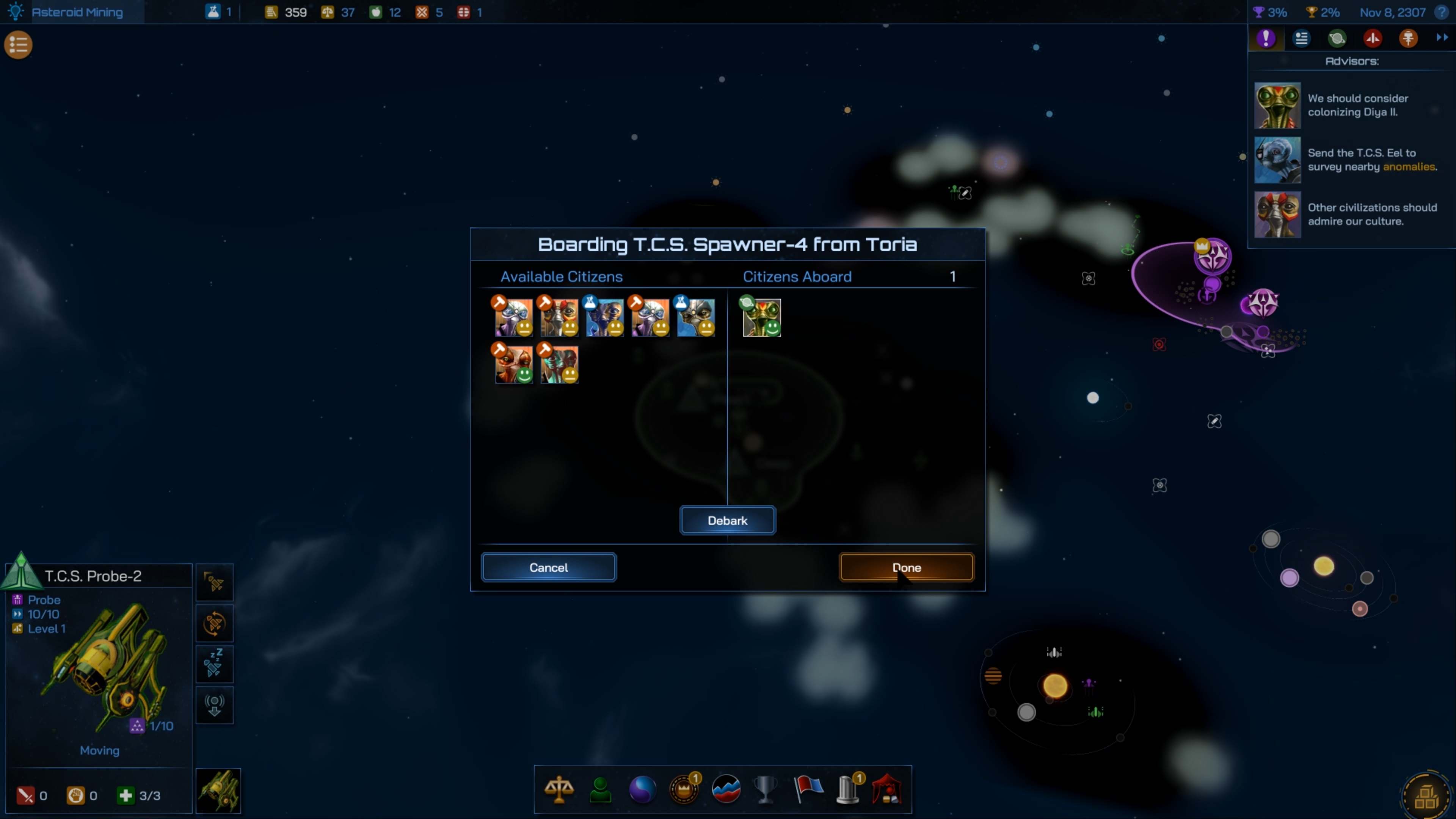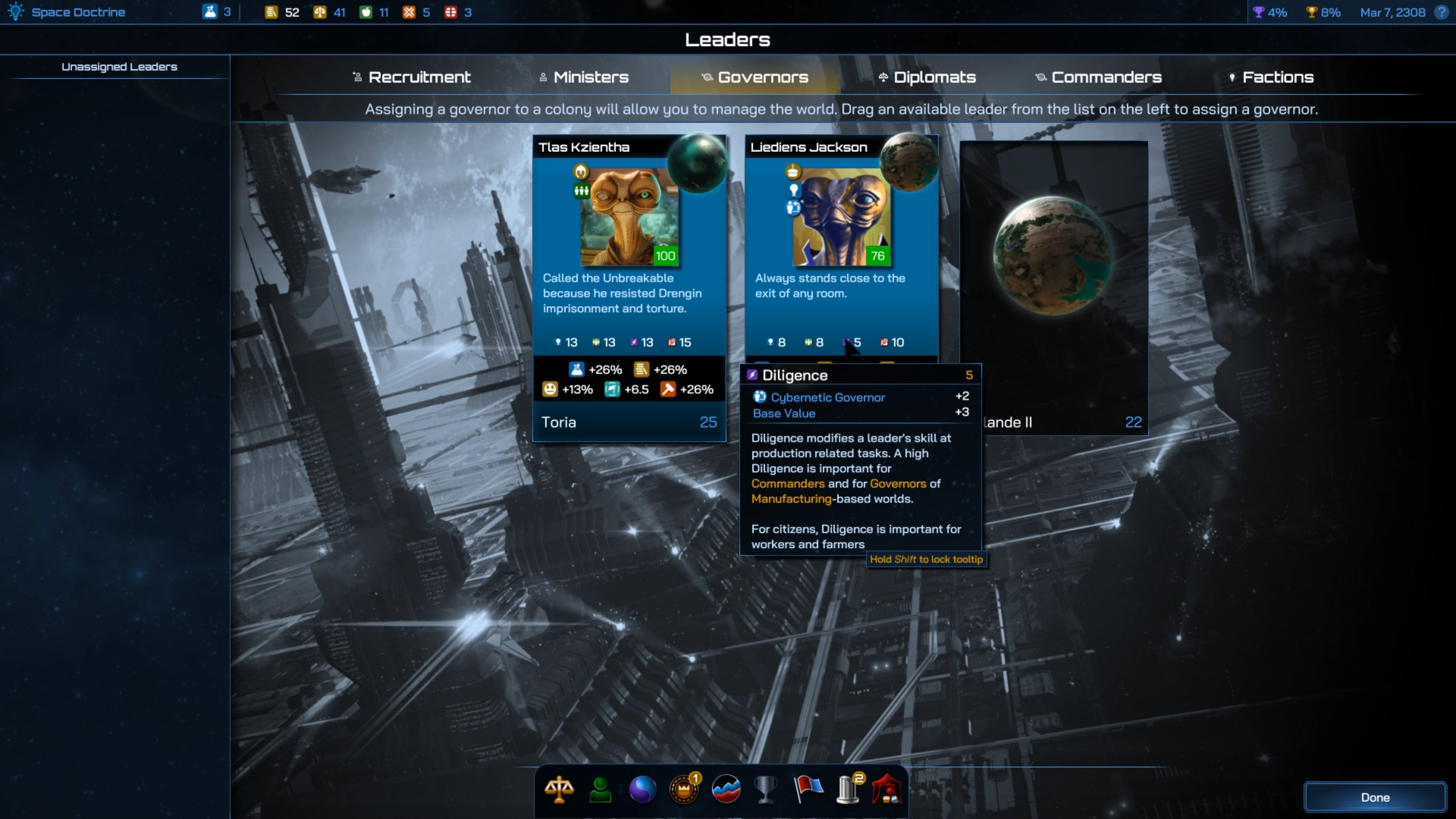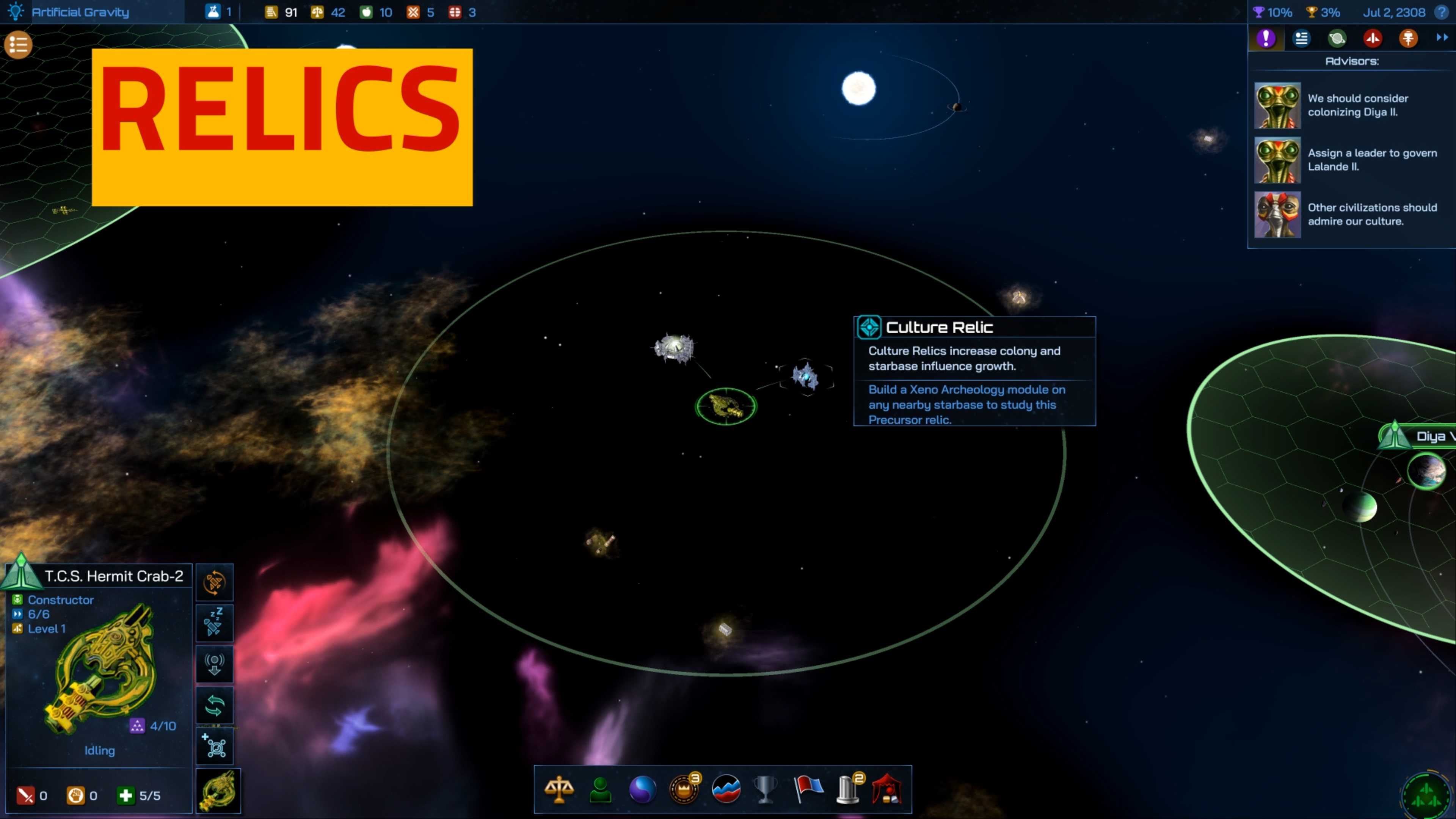This is how you begin a new game of Galactic Civilizations IV Supernova by quickly finding, settling, and making planets better from nearby star systems. I’ll tell you the top research projects to choose, what ships to make, and which buildings to construct on planets and space stations in outer space.
What to Do on First Turn
In Galactic Civilizations IV: Supernova, whether you’re playing with a human or an alien civilization on any map size, the initial steps for a good start are quite similar.
I’ll guide you through the first few turns to help you build a thriving galactic empire. You can also watch a video version for more details.
On your very first turn, there are several crucial tasks to complete. Start by searching for habitable planets in your home system and take a look at the map to understand its position relative to other solar systems in your part of the galaxy. This will help you plan your future exploration.
Your flagship, one of your initial ships, should be immediately sent to scan the nearest anomaly. These anomalies often provide useful bonuses, 업그레이드, or valuable resources.
The probe ship should be dispatched to the nearest neighboring solar system. Its mission is to seek out habitable planets with ample capacity for population growth, which means they have a high number of citizen slots.
Keep your probe ships scouting in distant regions because they have unlimited range. You’ll use newly constructed ships to explore the closer systems.
As for the habitable planets you’ve already discovered in your local solar system, this is where you’ll send your starting colony ship to establish your first colonies.
These planets will give your home planet more materials for making things, science for studying, money for your income, food to make your people grow, and influence. All of these numbers make your home world better, so you can build more and faster without needing to control things yourself.
When it comes to the shipyard, it’s best to get two extra probes, but if the map is small, you can go with just one. 이후, it’s a good idea to get a supply ship. This will help speed up building things on the next big planet you settle.
Regarding your homeworld and the people living there, it’s best to let the researchers keep doing their research to discover new technology. But for everyone else, train them as workers to increase how much stuff the planet makes. 이쪽으로, you can build things on the planet more quickly.
When it comes to these buildings, begin with the Capital City improvement on a tile that’s surrounded by many others. This will make the output of those surrounding tiles even better in the future.
다음, you should build the Capital Mainframe to speed up your research. Place it on a tile that already has a light bulb icon to get an extra boost. The Industrial Center, 반면에, should go on a tile with extra manufacturing, usually indicated by a cog icon. 어떤 경우에는, like the unique tile called Cataract, you’ll get three more levels of manufacturing.
Tide Pools are a special structure for civilizations that are ocean-based, and they provide an influence boost. This might not be crucial at the beginning of the game, so I won’t dive into that here. For more detailed information on mid and end-game mechanics, you can check out my how-to-play guide for Galactic Civilizations IV Supernova, linked here:
인구, Culture, Executive orders, 연구, Tax, and Policies
To make your planet’s population grow faster, you need to construct an orbital station for recruitment.
This station provides a +2 bonus to growth, which is significant early in the game, despite costing 100 credits and taking up a slot. I’ll explain why this is crucial as we continue.
In the Cultural progression window, you can identify the culture your civilization can most easily unlock by checking the ideology discount percentage.
For my civilization, it’s Collectivism, and the first ideology is Unification, doubling my homeworld’s influence. This will expand my zone of control around my planet more rapidly.
The next step is to spend your control points on an executive order to gain a new, free colony ship and colonize the third planet in your home solar system.
Just one tile short this turn, but no worries; you can do it next turn. The last thing to do in this first turn is to choose a technology to research.
The ones in the top left are selected from the available options on the right, and they receive a 50% research boost, making them faster to discover.
Colonial Policies are a must as they unlock a new way to boost your civilization and provide research at the start of the next turn, unlocking policy assignments.
You might be tempted to research the Universal Translator next to communicate with other alien civilizations, but I advise against it. You can receive a nice culture boost if you wait for the game to give you a mission to research this tech.
대신에, go for the Armed Shuttles tech to gain two free warships, which you can use for local space exploration.
In the civilization tab, you can adjust the tax rate to be high and reduce your citizens’ approval rating or set a low tax rate and be a very popular ruler.
The starting approval rating depends on the civilization you chose, but a general rule is to lower taxes, as there are other ways to earn credits and keep people happy to boost your planet’s growth.
As for policies, they can vary among civilizations, but the general rule is to initially use those that boost population growth, as you need more citizens to send them to colonize new planets.
In a big map, you could opt for a fast exploration policy since there’s more space to explore and more planets to discover.
Back on the homeworld, another structure, the Planetary Generator, should be available now. This structure boosts manufacturing and military, so place it on a tile close to your previous buildings to gain a boost and help its neighboring structures.
Leaders, 임무, Warships, Colonists, Space stations
Another crucial gameplay aspect is the leaders. You have one from the start, but you’ll need to recruit others. Match the leaders with the highest stats to the first three ministries. Look for the purple icon with a lightning bolt for exploration, the blue icon with a lightbulb for research, and the green icon with people for colonization.
Once you’ve recruited two more leaders with the highest stats, assign them to the ministries to gain bonuses for approval, 연구, and ship movement.
지금, spend a few turns exploring while you wait for first contact.
When you get the chance, choose the option to assign scientists to the project of understanding aliens. This will initiate a mission called “A Way to Communicate,” 어느, when completed, rewards you with 10 culture points. You can see this mission in the top left corner of your screen.
As your flagship finishes analyzing the first anomaly, choose the best bonus you can get, 보통 크레딧, 자원, 기술, or ship upgrades. Keep sending your flagship to discover and analyze more anomalies, as these can provide valuable starting bonuses to get ahead of other civilizations.
After researching the Armed Shuttles tech, focus on acquiring the starbase modules. This not only provides you with two free constructors to build starbases and collect essential resources or bonuses on the galaxy map but also gives you more ships to explore local space.
Your two new warships, which have a limited exploration range, should be sent to the nearest solar systems to find more planets for colonization. The goal is to locate planets with high population capacities, great prospects, and possible additional resource deposits.
If your draft colonists order is still in cooldown, you can choose to wait a few more turns or construct your own colony ship at the local shipyard. You can use credits to expedite ship construction and get one out faster, but this depends on the distance to the planet.
If it’s nearby, wait for the cooldown; if it’s far away, it’s better to hurry the construction of additional colony ships at the shipyard.
These new construction ships have multiple uses. One is to explore the space around your home solar system, and the other is to build space stations to exploit the resources you discover. Some require a communication starbase, while others need a mining one.
Once you’ve earned enough culture points, be sure to spend them to unlock your first ideology and start benefiting from its advantages.
거래, Colony ships, Supply ships, 유물, Construction ships
You can decline offers from alien races that aren’t favorable for your population, even if it upsets them. 하지만, if they present a legitimate trade offer, it’s a good idea to accept. The initial offers may not be very lucrative and might seem unfavorable for your side, but as you progress, alien civilizations might surprise you with exceptionally beneficial offers, like the significant monetary boost I received here for my civilization.
When you use your constructed colony ships, remember that you’re sending one of your citizens from your home planet to be the first colonist on another planet. This is why it’s crucial to grow your planet’s population, as colonizing new planets drains your limited citizen pool.
Constructing supply ships at your first shipyard is important because you can send them to your new colonies. Once you have a governor in place to rule these colonies, they can construct new buildings.
With a low population, construction is slow, and this is where supply ships come in. When they land on the planet, they expedite the production of new buildings.
When you discover space structures and relics that require a Xeno Archeology module for extra bonuses to your civilization, you’ll need to bring a constructor ship to that location and build a communication starbase.
Add the appropriate module and start benefiting from various bonuses that will significantly contribute to your success.
비슷하게, construction ships are used to build mining starbases, allowing you to extract resources for constructing improvements on planets, upgrading your ships, and creating more powerful ships in the mid and late game.
이 시점에서, you should be well ahead of your galactic neighbors, and I hope you enjoy your entire playthrough.
이것이 오늘 우리가 공유하는 모든 것입니다. Galactic Civilizations IV 가이드. 이 가이드는 원래 작성자가 작성하고 작성했습니다. Spector. 이 가이드를 업데이트하지 못한 경우, 다음을 수행하여 최신 업데이트를 찾을 수 있습니다. 링크.
